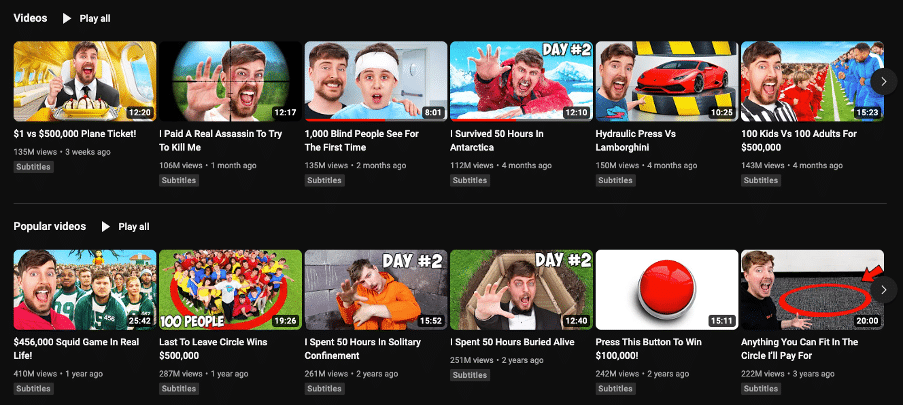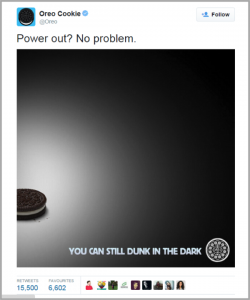What used to be a promising domain for growth and creativity has degraded beyond repair.
In 2024, going viral on the web can spell almost certain disaster.
The worst place for that to happen? On X, in what’s known as the “main character effect.” Ryan Broderick, the author of the hilarious “Garbage Day,” explains that, unlike most other forms of social media, when you go viral on X, it will most likely cost you your job.
One X user sums it up perfectly, “Each day on Twitter there is one main character. The goal is to never be it.” This, dear reader, is sage advice.
The rise of algorithmic influence
The concept of virality is a relatively young phenomenon — a mere 15 to 20 years old — and it’s completely facilitated by social media platforms turbocharged by algorithmic newsfeeds. These fierce guardians of information flows have been so finely tuned by algorithms that they create all kinds of bizarre situations online — going viral included.
The goal of giants like X, Facebook, Instagram, TikTok, Tumblr and even the almighty Google is to shoot for the most engaging user experience. But as Neil Postman suggests, the only way to get there is if we’re “entertaining ourselves to death.”
For around 20 years, we’ve been immersed in this algorithmic experiment, gradually substituting traditional institutions and significant portions of the entertainment industry with social media and online content platforms.
Although it has significantly contributed to democratizing growth and opportunities, enabling businesses of various sizes to expand through paid ads and keeping the internet accessible for billions, I believe that, from an ethical and societal health perspective, this experiment has missed the mark.
We’re diving headfirst into a turbulent epoch in today’s digital world, where social media’s ugly side is hitting us hard. It’s messing with our heads, getting our teens down, making democratic elections significantly more challenging, sidelining intellectual discourse and turning many folks into attention-seeking growth hackers.
You only have to look at the impact Facebook and Instagram’s “benefits” have on Myanmar’s society or delve into this report revealing that numerous web platforms are saturated with pro-Beijing content. You’ll get a sense of what I mean by the problems arising from ubiquitous access to social platforms designed to provoke outrage and encourage incessant clicking.
But it doesn’t stop there: The U.K. NSPCC recently came out with worrying research revealing that online child grooming using social media networks like Snapchat and Meta has risen by 82% over the past five years, mostly involving girls and primary-school-aged kids.
A tipping point is on the horizon.
Molded by the machine
Free-thinking innovators will approach behavior and monetization differently than content creators aiming to appease their algorithmic overlords. This distinction is becoming increasingly evident.
Figures like MrBeast are celebrated as contemporary media maestros for consistently achieving millions of views on YouTube. However, MrBeast dropped everything long ago in favor of a life that solely revolves around gaming the YouTube algorithm, which is why swinging by his YouTube channel gives you this:

MrBeast has obviously worked hard for his YouTube success, allowing him to expand into CPG and food and beverage — not to mention his “charity” project. This decidedly miserable content strategy exploits underprivileged people for views. But there’s a certain type of person who likes to consume that content regularly, and I’m afraid it’s not the Einsteins of the world — far from it.
MrBeast is the most obvious example of this, but millions of others follow his advice on crafting the perfect YouTube thumbnail or raking in millions of views. And for creators on other social networks, maximizing follower counts is the No. 1 goal.
Disgraced viral sensation Andrew Tate learned this early on. He funneled his massive follower base into a course that teaches men how to exploit women through preaching the “virtues” of toxic masculinity, which even now reaches millions of young people. I don’t know how his court case will go, but if he’s guilty of one thing, it’s hacking the algorithm for what people want — divisive, coarse and harmful content.
The lesson from these content creators is that marketers need to stop giving people what they want. When everyone creates for the algorithm, all we get is homogeneity — things become less interesting.
It’s destroying the viability of anything innovative and original to enter the mainstream consciousness and degrading our perception of what’s possible. People are boycotting these platforms because they want something fresh and perhaps challenging.
The battle for supremacy
In today’s digital domain, we’re seeing a similar scenario where two powers emerge as the ever-changing landscape of content creation and consumption evolves.
As these conflicts develop and stakes rise, we’ll start to see mainstream media completely back out of their relationships with the large tech platforms. The New York Times’ legal action against OpenAI is one example here. The Times is suing OpenAI for training on its content without remuneration and for good reason. High-quality content isn’t free, so what gives OpenAI the right to use that material to create a monetizable product people will eventually consume as news?
After all, if these platforms are increasingly saturated with generative AI trash and growth hackers, people will start to make for the exits, and the audiences with the real purchasing power (the smart ones) will leave first.
Social media, AI and search platforms need trusted, reputable and recognized media institutions to stay in the game. But unfortunately, that ship has already sailed for media: The tech industry has been too extractive and unforgiving for too long.
The ability to build online platforms is a solved problem. We now have an open battle between media, governments and big tech for who should own what, what’s considered valuable and how content can be used for commercial purposes.
But the kicker is that these “legacy” media companies have real technological sophistication now. The Times is A/B testing everything online just as much as most big tech platforms.
The odds could shift in traditional media’s favor. We might see these companies exit social and search platforms to find better opportunities within their spaces that meet consumer demand for bespoke content.
If they do, they’d better get cracking: the gap is getting ever wider between the algorithmic and the genuine, the artificial and the human, the time-worthy and the distracting, and the paywall and the newsfeed.
Going viral will soon become a position devoid of virtue, and the value of discovery found in hand-crafted content will become an in-demand rarity. But these are all opportunities for media companies to regain their advantage.
We might just see the day Big Tech is left out in the cold, huddling over whatever engagement they can farm with the growth hackers, the spammers and Andrew Tates of our world.
The post The zero-sum game of social media: When going viral spells disaster appeared first on MarTech.
(9)







